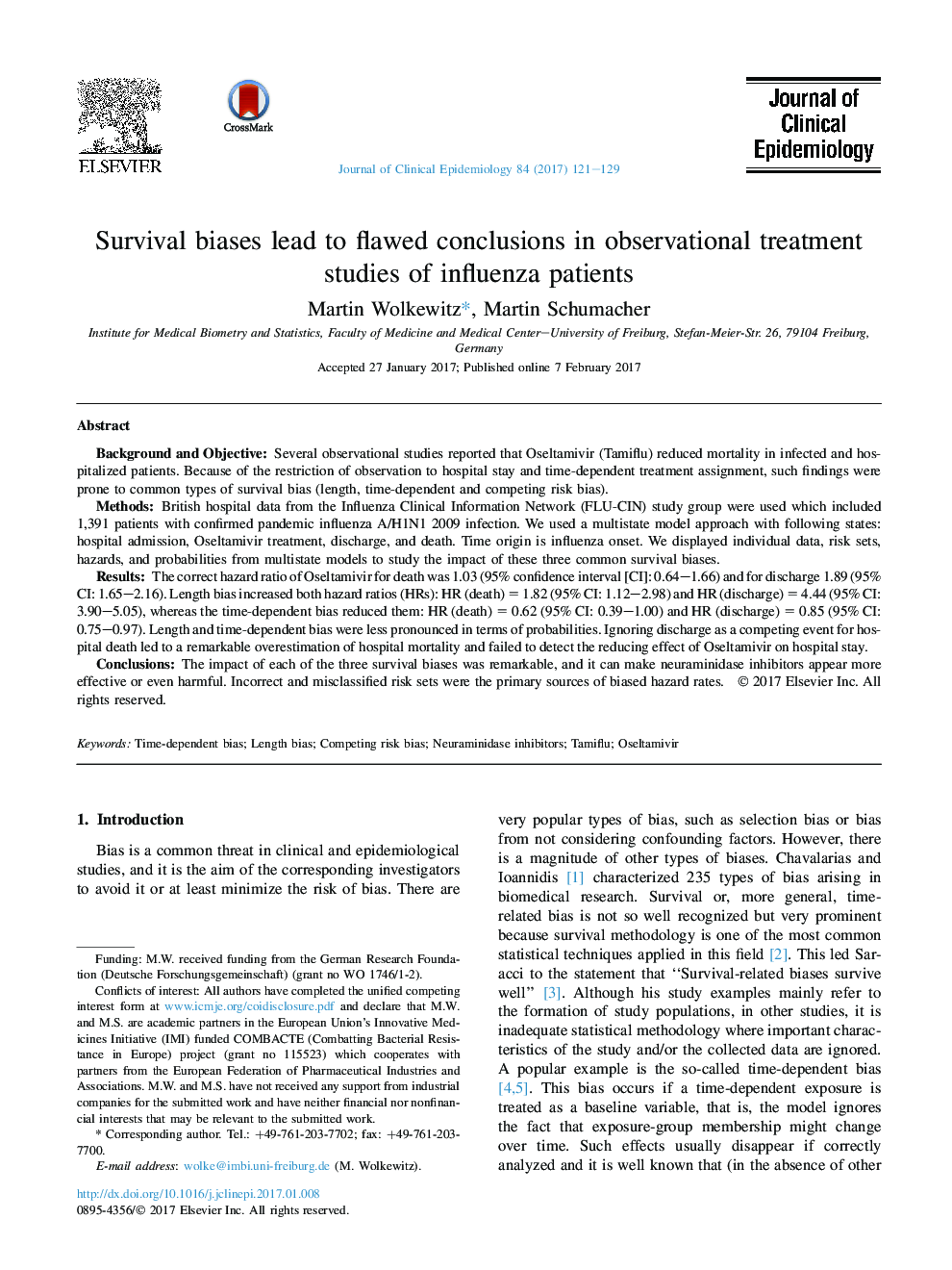| کد مقاله | کد نشریه | سال انتشار | مقاله انگلیسی | نسخه تمام متن |
|---|---|---|---|---|
| 5121733 | 1486842 | 2017 | 9 صفحه PDF | دانلود رایگان |
Background and ObjectiveSeveral observational studies reported that Oseltamivir (Tamiflu) reduced mortality in infected and hospitalized patients. Because of the restriction of observation to hospital stay and time-dependent treatment assignment, such findings were prone to common types of survival bias (length, time-dependent and competing risk bias).MethodsBritish hospital data from the Influenza Clinical Information Network (FLU-CIN) study group were used which included 1,391 patients with confirmed pandemic influenza A/H1N1 2009 infection. We used a multistate model approach with following states: hospital admission, Oseltamivir treatment, discharge, and death. Time origin is influenza onset. We displayed individual data, risk sets, hazards, and probabilities from multistate models to study the impact of these three common survival biases.ResultsThe correct hazard ratio of Oseltamivir for death was 1.03 (95% confidence interval [CI]: 0.64-1.66) and for discharge 1.89 (95% CI: 1.65-2.16). Length bias increased both hazard ratios (HRs): HR (death)Â =Â 1.82 (95% CI: 1.12-2.98) and HR (discharge)Â =Â 4.44 (95% CI: 3.90-5.05), whereas the time-dependent bias reduced them: HR (death)Â =Â 0.62 (95% CI: 0.39-1.00) and HR (discharge)Â =Â 0.85 (95% CI: 0.75-0.97). Length and time-dependent bias were less pronounced in terms of probabilities. Ignoring discharge as a competing event for hospital death led to a remarkable overestimation of hospital mortality and failed to detect the reducing effect of Oseltamivir on hospital stay.ConclusionsThe impact of each of the three survival biases was remarkable, and it can make neuraminidase inhibitors appear more effective or even harmful. Incorrect and misclassified risk sets were the primary sources of biased hazard rates.
Journal: Journal of Clinical Epidemiology - Volume 84, April 2017, Pages 121-129
